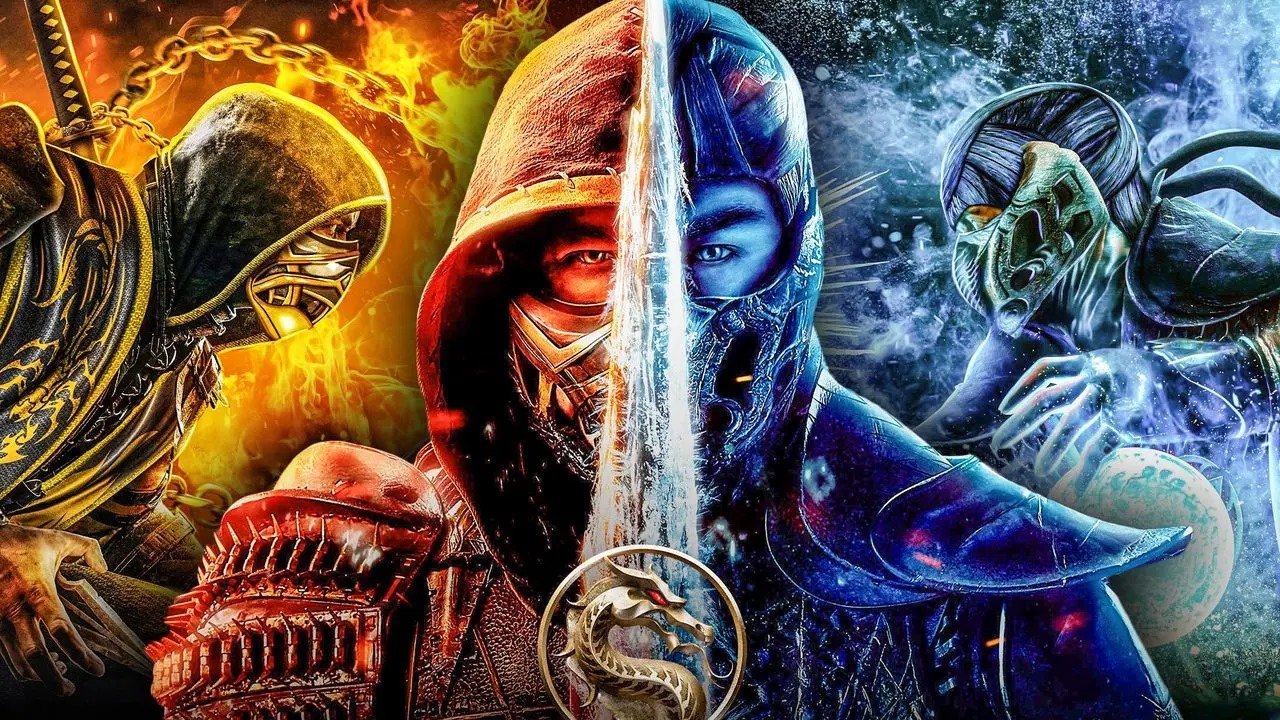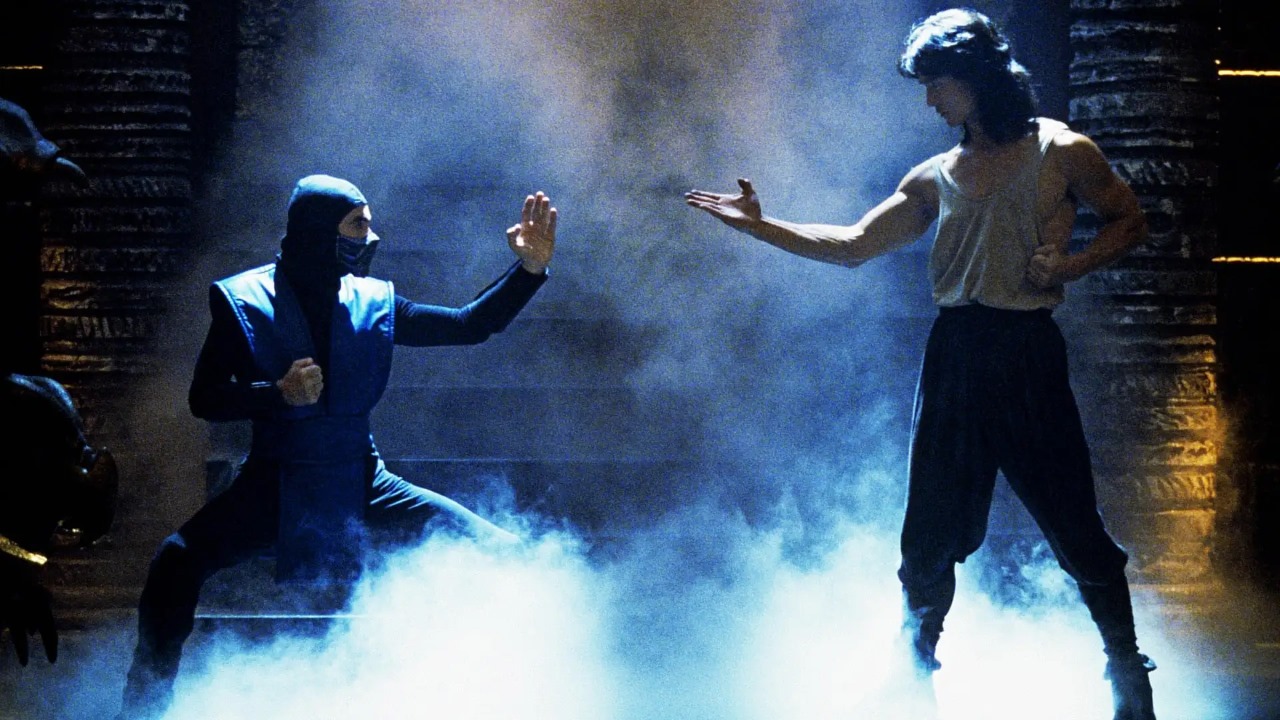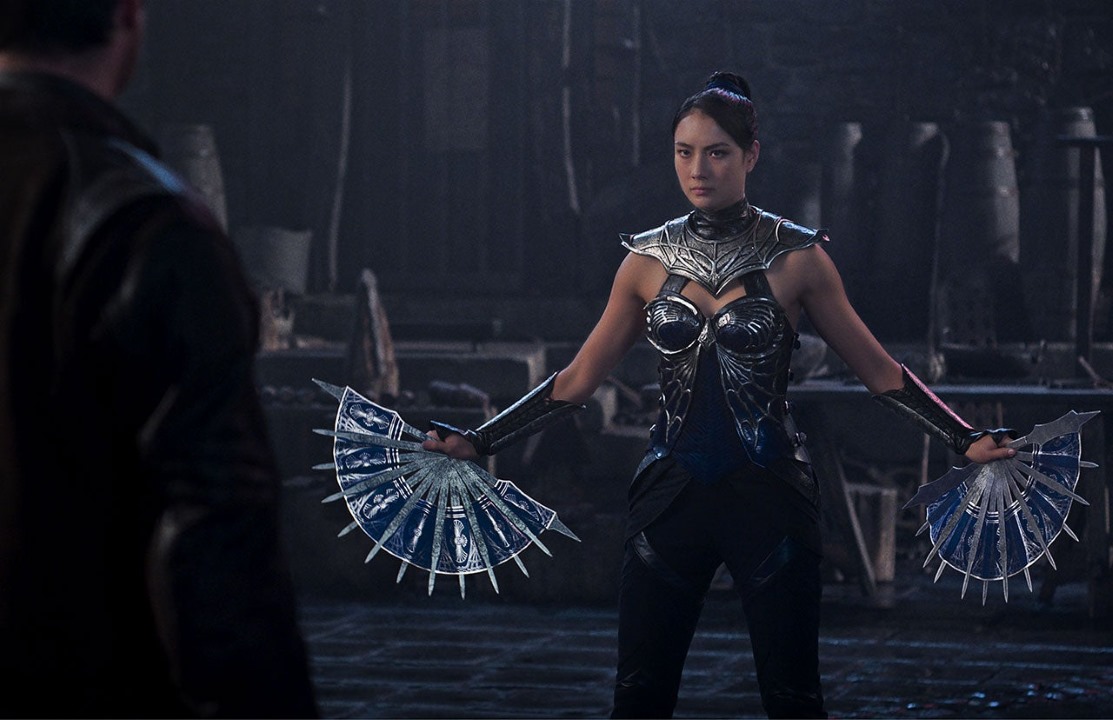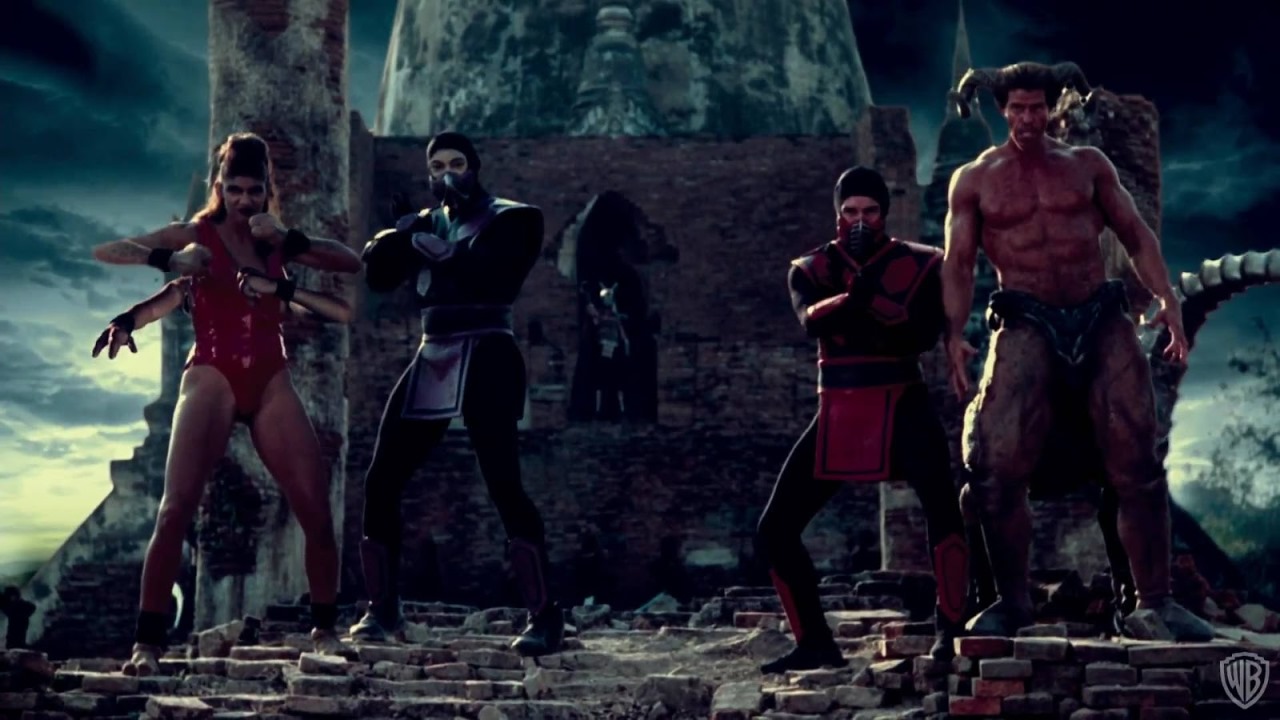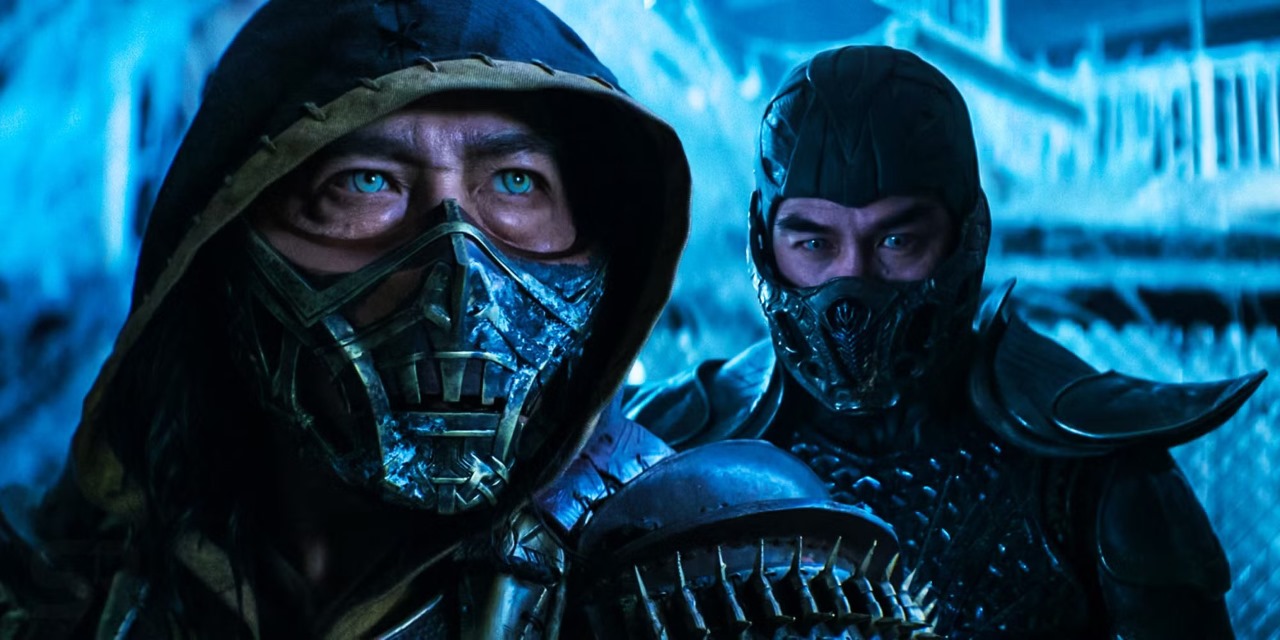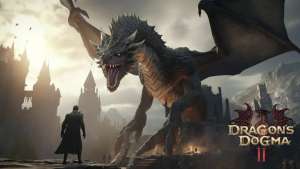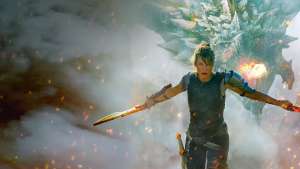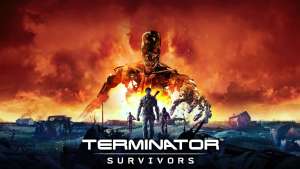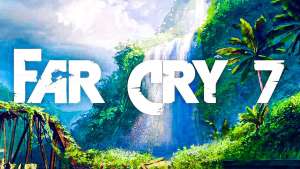When Mortal Kombat first burst into arcades in 1992, it wasn’t just a game—it was a shockwave. Hyper-violent, gloriously over-the-top, and unapologetically brutal, it sparked debates in congress, fueled schoolyard rivalries, and gave birth to one of the most controversial yet beloved fighting franchises in history. Over three decades later, its legacy has extended far beyond the joystick, branching into movies, animated features, TV shows, web series, and more.
This is not just a review of the films. It’s a full exploration of how Mortal Kombat has been adapted and reimagined on screen, and how each incarnation has mirrored (or clashed with) its bloody, often absurd source material. From the cult classic 1995 movie to the gritty 2021 reboot and the Netflix-style animated spin-offs, we’re stepping into the arena to analyze every fatality, every casting gamble, and every creative decision that helped define the franchise’s cinematic journey.
The Origins of Mortal Kombat
Mortal Kombat was born from the combined imagination of Ed Boon and John Tobias at Midway Games. Originally conceived as a digitized martial arts game to rival Street Fighter, it quickly found its own identity thanks to its violent finishing moves, called Fatalities, and its cast of mysterious warriors from Earthrealm and beyond. What started as a four-man development team soon became one of the most successful fighting franchises of all time.
The early games—especially the original trilogy (MK, MKII, and MK3)—built a world dripping with 90s cool: cyber ninjas, Shaolin monks, thunder gods, and hellish sorcerers. The mythology expanded rapidly, introducing realms, gods, timelines, and wars between good and evil. Unlike many fighters, Mortal Kombat had a strong narrative, which made it ripe for adaptation into other media.
Hollywood noticed. By the mid-90s, the franchise had sold millions and caused parental uproar that helped birth the ESRB rating system. A movie was inevitable—and in 1995, the first Mortal Kombat feature film hit theaters.
Mortal Kombat (1995)
Directed by Paul W.S. Anderson, Mortal Kombat (1995) is widely regarded as one of the best video game adaptations ever made—not because it’s flawless, but because it captures the spirit of its source with sincerity, energy, and surprising restraint. The film follows the classic tournament storyline, bringing together Liu Kang (Robin Shou), Johnny Cage (Linden Ashby), and Sonya Blade (Bridgette Wilson) as Earthrealm's champions against Outworld’s deadly warriors.
What works in this film is the tone. It treats the mythology seriously without becoming self-important. Christopher Lambert’s performance as the thunder god Raiden is campy but memorable. The choreography is tight, the environments are well-designed, and the practical effects, while dated, carry a physicality that modern CGI often lacks.
Unlike its arcade roots, the film received a PG-13 rating, meaning the signature fatalities were toned down. Still, it had enough martial arts action and fantasy flair to satisfy fans and newcomers alike. Characters like Scorpion and Sub-Zero were treated with mystery and visual flair, and the soundtrack—a blend of techno and industrial metal—became iconic.
Commercially, the film was a success, grossing over $122 million worldwide on a budget of just $18 million. It became a blueprint for game-to-film adaptations: focus on the core characters, keep the plot simple, and deliver on the action. While modern viewers may find its effects dated, there’s no denying that the 1995 Mortal Kombat still has soul—and perhaps the best video game movie theme song of all time.
Mortal Kombat: Annihilation (1997)
Unfortunately, the momentum from the first film didn’t last long. Mortal Kombat: Annihilation, the 1997 sequel, is often cited as one of the worst game-based movies ever made. Directed by John R. Leonetti, this film tried to cram the complex lore of multiple games into one 90-minute fever dream—and the result was chaos.
The plot picks up immediately after the first film, with Shao Kahn invading Earthrealm and breaking the rules of Mortal Kombat. While that setup aligns with the games, the execution derails quickly. Many original cast members didn’t return, and their replacements often lacked the screen presence of their predecessors. Most notably, Christopher Lambert was replaced as Raiden by James Remar, and Sonya Blade was recast with Sandra Hess.
The film introduces an overwhelming number of characters—Nightwolf, Sindel, Cyrax, Ermac, Sheeva, Rain, Kabal, and more—but gives them little development or screen time. Iconic figures are wasted in throwaway scenes, and the dialogue becomes a highlight reel of cringe-worthy one-liners (“Too bad… you… will die!”).
The special effects were infamously poor, even by 90s standards. Green screen compositing, digital doubles, and creature animation looked unfinished. Battles felt rushed, and none of the choreography matched the crisp fights of the original. The film attempted to mimic the scope of Mortal Kombat 3, but lacked the budget, time, and creative vision to do so effectively.
Despite its flaws, Annihilation turned a profit—grossing around $51 million globally—but it effectively killed plans for a third installment for over two decades. Still, its campy tone and excessive character count earned it a strange cult following among die-hard MK fans who view it as an accidental comedy masterpiece.
Mortal Kombat (2021)
After years of false starts and online rumors, Mortal Kombat finally returned to the big screen with a gritty reboot in 2021. Directed by Simon McQuoid and produced by James Wan, this version leaned heavily into fan expectations—promising hard-hitting violence, brutal fatalities, and a more faithful tone. And in many ways, it delivered.
The 2021 film opens with a strong prologue: a beautifully shot and emotionally charged confrontation between Bi-Han (Sub-Zero) and Hanzo Hasashi (Scorpion) in feudal Japan. This sets the stage for a revenge-fueled, modern-day tale of legacy and survival. The twist? The central character, Cole Young, is a brand-new creation for the film—a descendant of Scorpion and the audience’s entry point into the MK universe.
That creative choice sparked debate. While some appreciated Cole as a narrative anchor for newcomers, many fans felt his presence came at the cost of classic characters like Johnny Cage (absent entirely) or Kitana (only hinted at). Still, the film featured solid portrayals of Liu Kang, Kung Lao, Sonya Blade, Jax, Kano, and Raiden.
The violence, a crucial element for longtime fans, was on full display. Fatalities were gory, stylized, and directly lifted from the games, earning the film its hard R-rating. Standout moments include Kung Lao’s buzz-saw kill and Jax’s head-crushing finisher.
Visually, the film looks polished, with impressive costume design, elemental effects, and brutal fight choreography. The plot, however, doesn’t quite stick the landing—centered around pre-tournament drama rather than the actual tournament itself. But it sets the foundation for future films, ending with a tease of Johnny Cage joining the cast in the next chapter.
With a budget of $55 million, the movie made over $84 million worldwide—modest but successful considering pandemic-era restrictions and its simultaneous release on HBO Max. More importantly, it reignited interest in the franchise and confirmed that fans were ready for more Mortal Kombat on screen.
Mortal Kombat 2 (Upcoming)
With the moderate success of the 2021 reboot and the franchise buzz it stirred, Warner Bros. quickly greenlit a sequel. Mortal Kombat 2 is currently in production, with Simon McQuoid returning to direct and a script penned by Jeremy Slater (Moon Knight). While plot details are under wraps, several announcements have already ignited fan speculation.
The most notable casting news is the arrival of Johnny Cage, set to be portrayed by Karl Urban (The Boys, Dredd). Johnny’s absence in the 2021 film was one of its most glaring omissions, especially considering his popularity and comedic energy in both the games and earlier adaptations. Urban’s casting suggests a more grounded, older interpretation of the character, possibly adding both charisma and grit to the sequel.
Other rumored additions include Kitana, Baraka, Shao Kahn, and a deeper dive into Outworld politics. The sequel is expected to shift from the prelude storytelling of the reboot and finally deliver the actual Mortal Kombat tournament, something many fans felt was missing the first time around. This move could bring more structure and high-stakes drama to the narrative, and better mirror the game’s classic progression format.
The production team has promised even more faithful fatalities, brutal choreography, and character development. There’s also talk of exploring Quan Chi and the Netherrealm, which could deepen the lore and set up future cross-realm conflicts.
No official release date has been confirmed yet, but with production in motion and casting underway, a late 2025 or early 2026 premiere seems likely. Whether or not it improves upon the reboot’s shortcomings, the hype surrounding Mortal Kombat 2 proves that audiences—and gamers—are still ready to fight.
Mortal Kombat: The Journey Begins (1995)
Released as a companion to the original film, Mortal Kombat: The Journey Begins was an animated prequel that aimed to fill in the backstories of key characters like Liu Kang, Sonya Blade, Johnny Cage, and the evil Shang Tsung. Blending traditional 2D animation with some extremely early CGI (which has not aged well), this short film was more promotional than narrative-heavy.
The animation is rough by today’s standards, and the CGI segments—especially the fights—come across as awkward and dated. However, it holds value for its attempts at worldbuilding and early storytelling. It gives fans a glimpse into the tournament’s setup and why certain characters are fighting, albeit with overly simplified exposition and cheesy dialogue.
Despite its flaws, The Journey Begins found a cult audience thanks to VHS sales and its connection to the 1995 film. It served as an introduction to the lore for new fans and, for a brief moment, felt like the beginning of a larger animated universe. But that dream wouldn’t fully come to life until the Mortal Kombat Legends series two decades later.
Mortal Kombat Legends Series
Mortal Kombat Legends: Scorpion's Revenge (2020)
Released in 2020, Scorpion’s Revenge was a breath of fresh air for MK fans longing for something closer to the games. Produced by Warner Bros. Animation and directed by Ethan Spaulding, this film offered both stunning action and surprisingly strong character arcs. Centered around Hanzo Hasashi’s transformation into Scorpion, the film weaves his revenge plot with the first Mortal Kombat tournament.
Unlike previous adaptations, this one fully embraces the game’s mature tone. It features graphic violence, faithful Fatalities, and a no-holds-barred approach to storytelling. Characters like Shang Tsung, Raiden, Goro, and Johnny Cage are depicted with a balance of humor, menace, and authenticity.
The animation is sharp, dynamic, and carries weight during fight scenes. The narrative also cleverly balances the personal with the mythological, allowing both the tournament and Scorpion’s quest to feel equally important. Scorpion’s Revenge was a hit with fans and critics alike, establishing the Legends line as the definitive animated take on the franchise.
Mortal Kombat Legends: Battle of the Realms (2021)
A direct sequel to Scorpion’s Revenge, this installment continues the saga as Earthrealm’s warriors fight in a final tournament against Outworld. It raises the stakes significantly—introducing Shao Kahn, expanding the scope to multiple realms, and diving deeper into lore-heavy elements like the Kamidogu and the Elder Gods.
The film attempts to juggle a lot—too much, some might argue. Multiple subplots involving Sub-Zero, Liu Kang’s destiny, and Scorpion’s return play out simultaneously, sometimes overwhelming the pacing. Still, the action is relentless, the fights imaginative, and the animation just as tight as the first.
While some fans preferred the more focused approach of the first Legends film, Battle of the Realms still earned praise for its bold narrative choices and deeper dives into the MK mythology.
Mortal Kombat Legends: Snow Blind (2022)
The third entry took a daring creative risk by jumping forward into a post-apocalyptic timeline. Centered on Kenshi, one of the more underused characters in the games, Snow Blind features a world ravaged by villains like Kano, who has taken on an almost Mad Max–style role as a warlord. The visual style here is more stylized and weathered, reflecting the bleak tone.
Kenshi’s character development, his training under a jaded Kurosawa-esque Sub-Zero, and his eventual rise into a new warrior made for a surprisingly heartfelt narrative. The film also hints at the cyclical nature of Mortal Kombat’s wars and how new heroes must rise from the ashes of the old.
Mortal Kombat Legends: Cage Match (2023)
In a fun twist, Cage Match focuses entirely on Johnny Cage, setting the story in 1980s Hollywood. Styled like a VHS-era action flick, the film mixes MK mythology with buddy cop clichés, over-the-top villains, and synthwave soundtracks.
It’s less brutal and lore-heavy than previous entries, but intentionally so. This one’s about tone and style—delivering a charming, funny, and self-aware look at one of MK’s most beloved characters. If Scorpion’s Revenge was the serious drama, Cage Match is the Saturday-night popcorn flick. And for many fans, that balance is exactly what makes the Legends series so versatile.
Mortal Kombat on Television
While the movies grabbed the spotlight, Mortal Kombat also made its way into TV—both animated and live-action—with surprisingly bold results. These adaptations varied widely in quality and tone, but each played a role in keeping the MK mythos alive between game releases and film reboots.
Mortal Kombat: Defenders of the Realm (1996)
Defenders of the Realm was a short-lived animated series that aired in the mid-90s. Clearly aimed at a younger audience, it picked up after the events of the 1995 movie and featured a team of Earthrealm warriors—Liu Kang, Sonya, Jax, Nightwolf, and Sub-Zero—facing off against invading Outworld forces.
The animation was standard Saturday morning fare, and while it lacked the violence of the games (understandably, due to its time slot), it tried to carry forward some of the deeper lore. It also attempted character development through serialized storytelling, which was ambitious for its format. Still, it only lasted one season.
For fans, Defenders of the Realm holds nostalgic value. It might be cheesy, but it was one of the first attempts to expand the Mortal Kombat universe beyond the arcade.
Mortal Kombat: Conquest (1998–1999)
This live-action series was something entirely different. Set centuries before the events of the games, Mortal Kombat: Conquest followed the story of Kung Lao—the ancestor of the current MK hero—and his companions Taja and Siro as they defended Earthrealm from threats across multiple realms.
The show was a curious mix of fantasy action and late-90s melodrama, with generous helpings of martial arts choreography, early CGI effects, and slow-motion stunts. Despite its flaws, Conquest gained a cult following for its ambition and serialized format. It explored elements of the MK universe—like Shang Tsung, Quan Chi, and the Elder Gods—in ways the movies didn’t.
Unfortunately, it was canceled after one season, ending on a cliffhanger that saw most of the cast presumably dead. Still, for fans craving deeper lore and world-building, Conquest was a bold experiment that deserves more credit than it gets.
Mortal Kombat: Legacy (2011–2013)
With the rise of YouTube and web-based entertainment, Mortal Kombat: Legacy emerged as a gritty, modern retelling of MK’s core characters and origin stories. Created by Kevin Tancharoen, the series started as a short proof-of-concept film (Rebirth) that went viral, leading Warner Bros. to greenlight a full digital series.
Legacy was released in two seasons and focused on individual character arcs—Scorpion and Sub-Zero, Jax and Kano, Kitana and Mileena, and others—reimagined with a grounded, sometimes sci-fi tone. Characters were given emotional backstories, and episodes leaned more on drama and world-building than pure action.
It was well-received for its serious tone, strong casting, and sleek production values (especially for a web series). Legacy helped reinvigorate interest in MK adaptations and proved that the franchise could thrive in a serialized format. Although a third season was teased, it never materialized, making Legacy another high-potential but ultimately unfinished project.
Comparing Films and Games
When evaluating Mortal Kombat’s many screen incarnations, the question is always the same: how close are they to the games? The answer is complicated, because each adaptation picks and chooses which parts of the lore to honor, remix, or ignore entirely.
Character Portrayal
The games—especially from Mortal Kombat 9 onward—offer rich, branching character arcs. Figures like Scorpion, Sub-Zero, Kitana, Raiden, and Liu Kang have deep motivations, rivalries, and personal growth across multiple timelines.
Films, on the other hand, often reduce characters to their most basic traits. For example, the 1995 film gave Liu Kang a solid arc, but others like Reptile or Kitana were barely explored. The 2021 reboot went deeper into Scorpion and Sub-Zero but sidelined Johnny Cage entirely. The Legends animated series arguably gets closest to the heart of the characters—offering real development alongside faithful movesets and lore references.
Tone and Violence
Mortal Kombat is known for its violence, but not all adaptations embraced it. The 1995 movie, limited by its PG-13 rating, focused on martial arts and mysticism. Annihilation veered into camp. The 2021 film and Legends animations finally delivered the gore fans expect, complete with fatalities and brutal showdowns that feel pulled straight from controller to screen.
Lore and Story
The games thrive on multi-realm politics, time travel, revenge quests, and mystical hierarchies. While some films touch on these themes, most prioritize action over exposition. The reboot and animated films come closest to replicating the games’ layered storytelling. Others, like Conquest and Legacy, took more time to build out the lore, albeit at the cost of mainstream exposure.
Cultural Impact and Legacy
Few video game franchises have a legacy as multifaceted as Mortal Kombat. It didn’t just change how fighting games were made—it reshaped how they were regulated, how violence was perceived in media, and how game characters could become icons.
The 1995 movie remains a cornerstone of 90s pop culture, often cited as the first good video game movie. Its soundtrack, aesthetics, and characters have lived on in memes, retrospectives, and fan conventions. Even those who never played the games recognize its opening shout: “MORTAL KOMBAT!”
Over the years, the franchise proved resilient. Even when its films flopped (Annihilation), or its series were canceled (Conquest), it found ways to survive and adapt. The rise of high-quality animated content and serialized storytelling has allowed the Mortal Kombat universe to reach new generations in ways few franchises ever do.
And in gaming, it continues to evolve. Mortal Kombat 11 brought cinematic storytelling to the next level with full motion-capture performances, movie-tier direction, and an epic narrative that ties back to decades of history. It’s rare for a franchise to dominate both in gameplay and cinematic spectacle—but Mortal Kombat has managed to straddle both worlds, often with bloody success.
Mortal Kombat Movies Comparison Table
| Title | Release Year | Director | Main Characters / Cast | Budget | Worldwide Revenue | Notes / Game Ties |
|---|---|---|---|---|---|---|
| Mortal Kombat (1995) | 1995 | Paul W.S. Anderson | Robin Shou (Liu Kang), Linden Ashby (Johnny Cage), Bridgette Wilson (Sonya), Christopher Lambert (Raiden) | ~$18 million | ~$122 million | Loosely based on MK1; first big screen success; PG-13 |
| Mortal Kombat: Annihilation | 1997 | John R. Leonetti | Robin Shou, Talisa Soto (Kitana), James Remar (Raiden), Sandra Hess (Sonya) | ~$30 million | ~$51 million | Based on MK3; critical failure, rushed production |
| Mortal Kombat (2021) | 2021 | Simon McQuoid | Lewis Tan (Cole Young), Hiroyuki Sanada (Scorpion), Josh Lawson (Kano), Jessica McNamee (Sonya), Joe Taslim (Sub-Zero) | ~$55 million | ~$84 million | Based on reboot-era MK games; HBO Max + theatrical release; R-rated |
| Mortal Kombat Legends: Scorpion’s Revenge | 2020 | Ethan Spaulding | Animated – Patrick Seitz (Scorpion), Steve Blum (Sub-Zero), Jordan Rodrigues (Liu Kang) | Estimated $4–6 million | Digital release (no theatrical) | Origin-focused; praised for animation and tone |
| Mortal Kombat Legends: Battle of the Realms | 2021 | Ethan Spaulding | Animated – Jordan Rodrigues, Matthew Mercer (Stryker), Jennifer Carpenter (Sonya) | Estimated $5–7 million | Digital release | Continuation of Scorpion’s Revenge; dives deeper into lore |
| Mortal Kombat Legends: Snow Blind | 2022 | Rick Morales | Animated – Ron Yuan (Sub-Zero), Manny Jacinto (Kenshi), David Wenham (Kano) | Estimated $5–7 million | Digital release | Post-apocalyptic tone; focused on Kenshi and new MK lore |
| Mortal Kombat Legends: Cage Match | 2023 | Rick Morales | Animated – Joel McHale (Johnny Cage), Jennifer Grey (herself) | Estimated $5–6 million | Digital release | ’80s-themed Johnny Cage story; humorous tone |
| Mortal Kombat 2 (upcoming) | TBD (likely 2025–2026) | Simon McQuoid | Karl Urban (Johnny Cage), Lewis Tan, Jessica McNamee, Tadanobu Asano (Raiden) | TBD | TBD | Will likely feature full tournament; Johnny Cage’s debut in reboot timeline |


